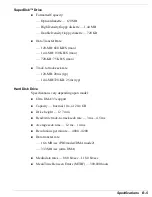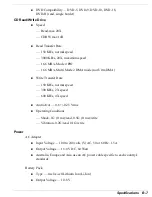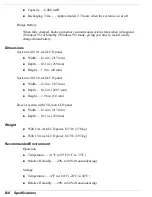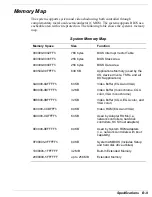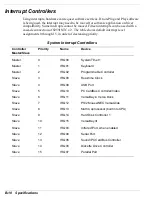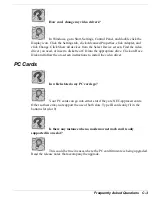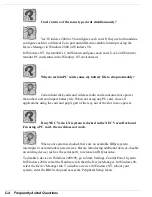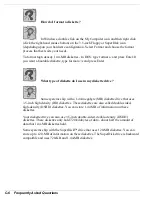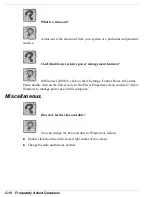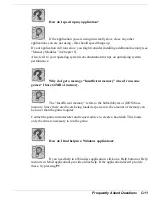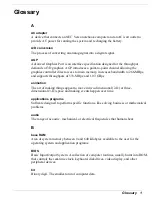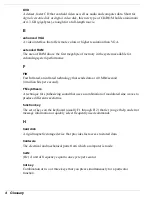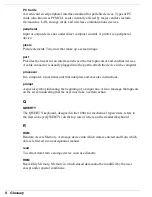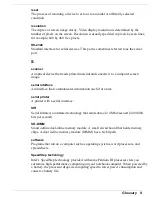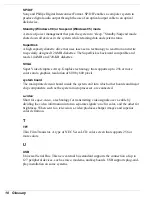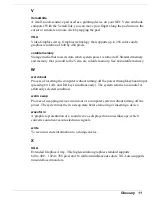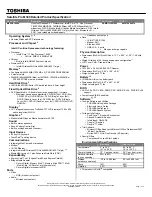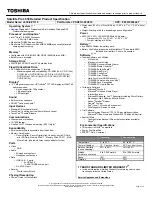
C-8 Frequently Asked Questions
What is the purpose of Suspend to RAM? (Windows NT)
You can initiate full Suspend-to-RAM in Windows NT by pressing the
Power button and holding it in place for 4 or fewer seconds. This places the system in a
deeper state of “sleep” and requires that you press the Power button again to bring it
back to Active mode. (The System Switch BIOS parameter must be set to “Sleep.”)
Putting your system into Suspend initiates the Suspend power-saving mode and is a
convenient way of conserving energy when you are going to be away from your system
for short period of time.
What is the purpose of Suspend to RAM? (Standby in Windows
2000/98)
You can initiate full Suspend-to-RAM in Windows 2000/98 by accessing
Start, Shut Down, Standby. This places the system in a deeper state of “sleep” and
requires that you press the Power button to resume operation.
Putting your system into Standby initiates the Standby power-saving mode and is a
convenient way of conserving energy when you are going to be away from your system
for a short period of time.
What is the function of Suspend-to-File? (Windows NT)
In Windows NT, Suspend-to-File provides the greatest power savings by
putting the system in a maximum power shutdown. When the system goes into STF
mode, it saves data and system status and then shuts off power to all components. STF
mode lets you save power without first saving your work. Resuming from STF mode
requires less time than performing a cold boot.
Summary of Contents for VERSA LXI - VERSION 10-2000
Page 1: ......
Page 39: ...2 12 Getting Started Inserting the battery pack 6 Turn over the system...
Page 144: ...9 Using Multimedia Audio Video Multimedia Applications...
Page 151: ...10 Solving System Problems Problem Checklist Start Up Problems If You Need Assistance...
Page 168: ...B Specifications System Components Memory Map Interrupt Controllers...


